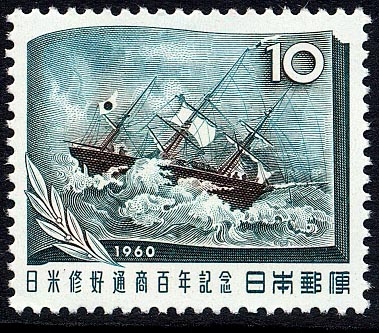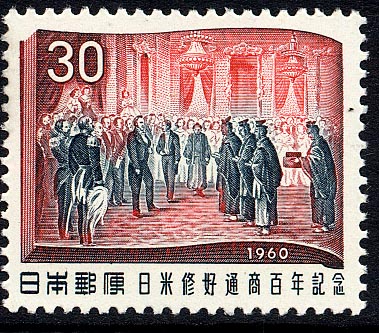To understand a little better the reason why Japan the KARIN MARU and three other ships were ordered in the Netherlands, we have to go back to the Verenigde Oostindiesche Compagnie (VOC) the only western company who was allowed to keep a trading post, on the small island Deshima near Nagasaki. And this trading post was the only connection of Japan with the Western world for a few centuries. When in the 19th century other western countries put some pressure on Japan by sending warships to the coast of Japan under which the USA to open the boundaries for international trade, Japan had to give up there seclusion. The shogun of Jedo did understand when his country would stay independent; it needed quickly the western technical resources. The Dutch still in Japan were the first country that were ask for help, maybe also the Netherlands were a small country, which they did not fear. The Japanese wanted so quick as possible a modern navy, and they ordered four screw corvettes in the Netherlands, with the agreement that the Dutch trained the first Japanese navy personnel. The first vessel handed over to the Japanese navy was HMS SOEMBANG a paddlesteamer and a present of the Dutch Government, which in 1854 sailed to Japan, after arrival in 1855 renamed KANKO MARU and she was the first vessel of the modern Japanese navy.
The first of the four ordered screw corvettes was built by the yard of C. Gips en Zonen of Dordrecht, Netherlands.
1857 Launched under the name JAPAN.
Tonnage circa 650 tons, dim. 66 x 10.50m.
Powered by a steam engine of 100hp, one screw.
Armament 12 guns
Bark rigged.
Crew 85 men.
After delivery, the JAPAN sailed via the Cape of Good Hope to Japan, and after delivery to the Japanese Government, renamed in KANRIN MARU.
The KANRIN MARU voyage across the Pacific to America did give her a place in history. She sailed from Japan on 4 February 1860 with a delegation of Japanese diplomats, together with the USS POWHATAN. There were 96 men on board during this voyage On board the KANRIN MARU were an American navy officer Capt. John M Brooke and a crew of 10 men from the shipwrecked American vessel FENNIMORE COOPER who needed passage back to America.
Capt. Brooke kept a journal in which he wrote, after sailing the Japanese captain got seasick and he was not seen for many days on deck. A Japanese sailor Nakahama Manjirô (John Manjiro) who had been sailing on American whale ships for 10 years, and had returned to Japan did all of the translation between the Japanese and the Americans. The KANRIN MARU arrived in San Francisco on 17 March 1860.
The Japanese diplomats who sailed on the USS POWHATAN traveled to Washington where she were received by President James Buchanan for ratification of the treaty of friendship and commerce on 17 May. 1860, as seen on the other stamp in the MS., which show the Japanese delegation elaborately costumed received by the President dressed in black and flanked by his cabinet in the east room of the White House.
On her return voyage the KANRIN MARU anchored off Port Lloyd (now Port Futami) on the Bonin Islands on 19 December 1861 they conducted a survey of the island and leaving behind 6 Japanese administrators, before sailing back to Japan.
The KANRIN MARU was wrecked in 1872 at Hokkaido, Japan.
Sources: Some Dutch books and websites. The URL
http://www.whitehousehistory.org/08/subs/08_b12.html gives more info on the treaty between the USA and Japan.
Japan 1960 10y sg 825, scott693


